How to grow tulips from seeds?

Tulips are very popular these days. In Europe, the first mention of tulips dates back to 1554. However, Holland is considered their homeland, where earlier these flowers were sold for gold. Over hundreds of years of breeding, they have adapted to survive in different conditions: cold, heat, high humidity and arid climate. Today there are more than 2 thousand varieties of these flowers. They look great in combination with other flowers and perfectly decorate any bouquet.
Reproduction
Tulip is a perennial herbaceous bulbous plant of the Liliaceae family. He is a relative of the lily. The number of cotyledons is one. It is possible to grow tulips from both bulbs and seeds.
Bulb propagation is the fastest. During the flowering of the plant, the bulb forms its bulb babies. The old onion dies off after the formation of new ones. Young bulbs develop throughout the year to form a flower and new babies. Thus, the lifespan of a bulbous tulip is only 2 years.
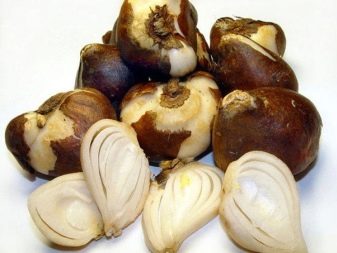
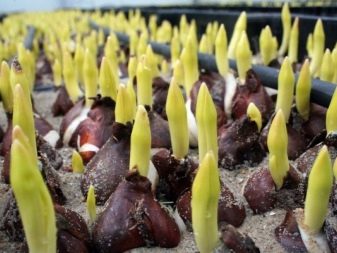
Growing flowers from seeds is a more complicated and time-consuming process. Before receiving a full-fledged flower, you will have to wait 5, or even 6 years. But when grown from seeds, you can get new varieties and varieties of these wonderful flowers.
You can grow these beautiful plants both in the garden, in the greenhouse, and at home. At home, you can do sowing in a pot. Certain varieties are suitable for such cultivation. If you follow all the recommendations and proper care, you can get beautiful flowers grown by your own hands.
This can be done by both professionals and amateurs. The main thing is to follow all the growing instructions. These are not very picky flowers, so they will definitely respond to care and attention.
Seed collection and soil preparation
To collect seeds, a faded flower must be supported with a stick so that the stem does not bend and rot: the seeds can ripen in their natural environment. When the pods dry out and burst, the dry flower is cut and stored in a warm, dry place. The seeds should turn brown after complete drying. It will be better if you leave them in the boxes until the very planting.
The seed pod is divided into 3 parts, in which the seeds are stored in piles. They are flat rather large plates of a triangular or elongated shape. In one flower, from several dozen seeds to several hundred can ripen. For example, one Greig tulip gives up to 1 thousand pieces.
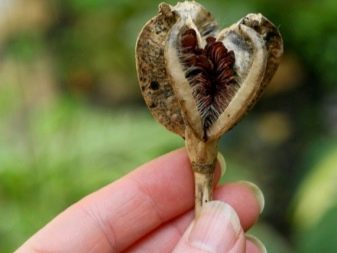
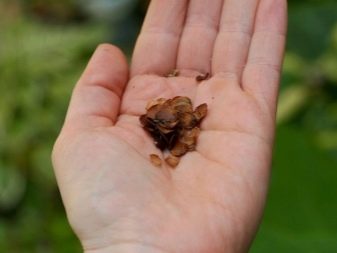
If these are wild flowers, then after drying, the box bursts, and the seeds spill out of it and are carried by the wind. For domestic tulips, the ground should be prepared. Loam is best. For central Russia, the optimal time for soil preparation is late September - early October.
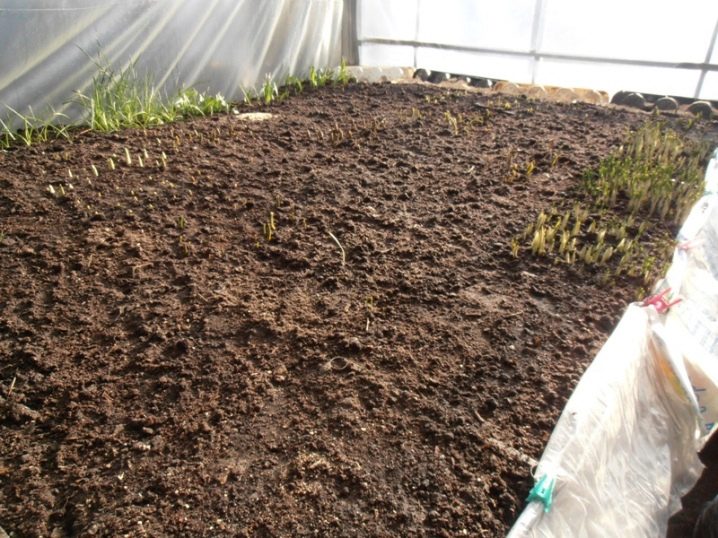
The procedure is performed step by step:
- first, you should fence the garden bed with boards around the perimeter to make a box: the earth will not spill out and shift;
- the soil must be dug up, and then fertilized well, add rotted humus to it;
- pour a layer of sand 2-3 cm thick on top.
You can pre-germinate flower seeds in the refrigerator to facilitate and speed up their growth.
For this, the seeds are spread on filter paper moistened with water. Make sure that the paper is always damp and the temperature in the refrigerator does not exceed + 5 °.
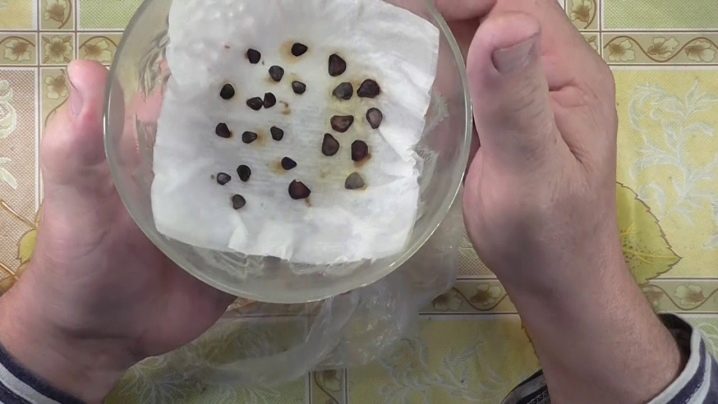
After about 2-3 months, the seeds will have their first small roots. The prepared material is planted in the fall in the ground or in a greenhouse. This must be done very carefully so as not to damage the fragile young roots.
However, seeds can be bought today. There are many Russian manufacturers on the market. If you buy seeds from well-known companies, then you will get the expected result. You can buy Polish seeds. Poland is known for its developed agricultural culture, compliance with quality standards.
It is not worth buying seeds from China from cheap shopping sites. There are many reviews on the Internet that such seeds do not take root, they rot even during soaking. Although in fairness it should be noted that there are positive reviews, but there are very few of them.
Landing
The most favorable time to sow seeds for seedlings is mid-October. Seeds should be carefully inspected before planting. They should be solid and with a transparent layer around the edges. Kernels with holes, suspicions of rotting, are best placed aside to avoid contamination of the rest of the seeds.
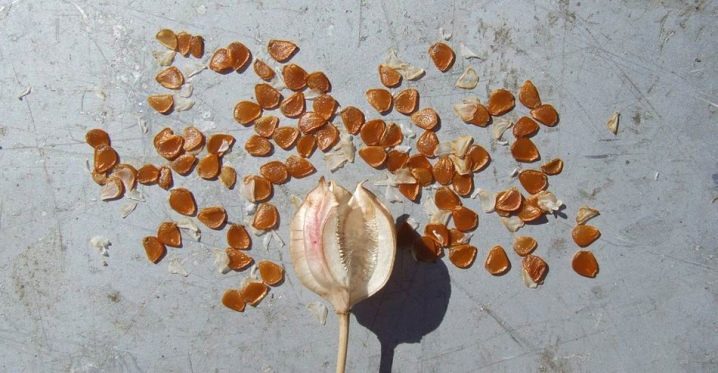
Seeds need to be poured in a fairly dense layer on the sand and covered 1–2 cm with earth and again with sand on top.
The germination capacity of the seeds of this flower is not very high, so it is better to plant them in larger quantities. Leave in this form until spring. It should be noted that if it is very cold outside, then the garden must be insulated. This can be done by putting the film on it and covering it with branches on top. Pre-clean the branches of leaves. You can also cover it with rotted humus with a layer 5–7 cm thick. If you grow tulips in a greenhouse, then you don't have to dig them out for the first 2–3 years.
Bulb formation and cultivation
By spring, tiny single leaves rolled into a tube should appear from the ground. Outwardly, they will resemble green onions. It is impossible to dig up and transplant such leaves at the moment. The leaf should dry out by summer. A small onion about 2 mm in size will form in its place.
This onion must not be touched. Therefore, if you do not want this garden to be empty all summer, plant any salad crops between the rows with seeds.... Just cut them off carefully so as not to damage the still weak tulips. Make sure that there are no weeds in the garden, otherwise weak shoots will die.
Tulips need to be irrigated with water or sprinkled and do not like very hot and dry air. They also do not tolerate the wind very well. As a rule, fertilizers are enough for flowers, which are available in humus and earth. But sometimes, when watering, you can add fertilizers with potassium and nitrogen to the water, alternating these types of dressings.
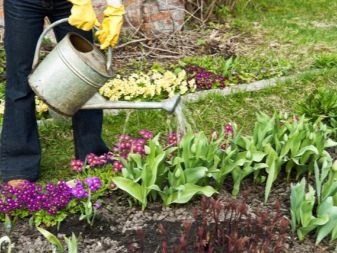
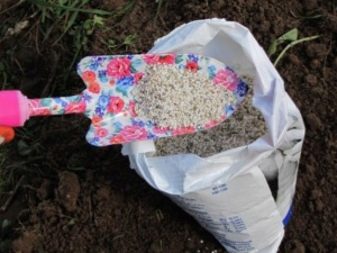
It is important not to over-flood the flowers, otherwise rot can form on the bulb and microorganisms and pests can start, which will be very difficult, and sometimes impossible to get rid of.
It is recommended to insulate and fertilize the ground for planting for the winter. For this, humus is suitable. It is enough to sprinkle the bed with a layer 5–6 cm thick. By the third year, a bulb of 2-3 cm in diameter is formed. She gives a couple of baby bulbs. There will be no flower yet.
However, by the summer, a wide and flat leaf will appear. Around the middle of summer, the bulbs are dug up and stored in a dry place until autumn. It is better to use a special sieve to collect all the bulbs. You need to dig about 12 cm with soil and sift. You will notice that the bulbs will be of different sizes: these are seed bulbs and their babies. The bulbs should be planted in the ground around mid-October.
- A furrow should be dug with a depth of 13-15 cm.
- Add 2–3 cm of fine sand.
- Place the bulbs 3 cm apart. Larger bulbs are planted at a distance of about 4 cm, those that are smaller can be planted closer to each other. Previously, it is advisable to soak the bulbs in a strong dark solution of potassium permanganate, 20 minutes will be quite enough. Potassium permanganate kills bacteria and microorganisms, actively fights mold and rot. By disinfecting the bulb, you will give it more strength to grow and flower.
- Drizzle with salted water and cover with humus. Usually gardeners take a glass of salt to a large iron bucket of water.
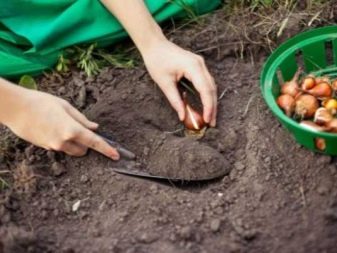
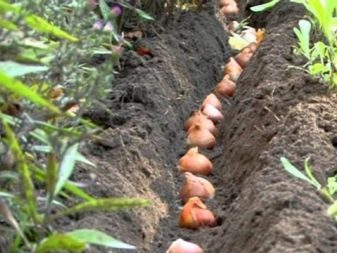
The bed must be weeded and loosened periodically so that the earth breathes. In the spring, leaves will appear from the bulbs, and the bulb will let the children go. We dig it up again by the middle of winter, and plant it in mid-October. That is, for several years in a row, we repeat cyclical actions while bulbs and flowers are formed for reproduction. Thus, the first large flowers can be obtained in 5-6 years.
After the first large flower, the flowers will become brighter and richer every next year. Depending on the variety, the flowers acquire the most intense color at the age of 8–12.
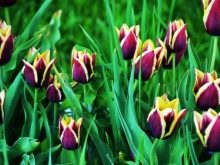


To prevent disease and death of beautiful flowers, you should carefully follow the rules of agricultural technology:
- choose a suitable site for planting;
- do not allow proximity to potatoes and cabbage;
- take into account the depth and density of planting;
- timely remove and destroy diseased bulbs and plants;
- store seed in proper conditions.
You can learn more about how to grow tulips from seeds by watching the video below.







































































































The comment was sent successfully.